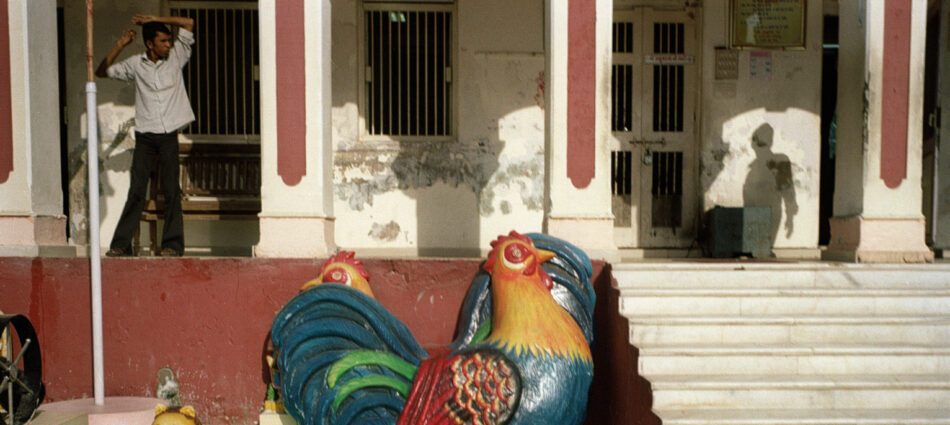
Dialog Between Bigots (Part I of VI)

Ayodhya, Uttar Pradesh
A few months ago I was asked by an editor in Europe to speak about my work, in particular my work in the Arab world. She had seen some of my photographs from Northern Iraq that focused on the struggle of Iraq’s Assyrian Christian community as it confronted a resurgent Kurdish nationalism and a raging Iraqi militant resistance. The editor wanted to discuss not just the specific issues related to the Assyrian Christian community, but broader issues related to the ‘Muslim’ world.
The interview quickly fell apart. In fact, it fell apart on the very first question. I had been vary of giving an interview. In fact, I generally don’t like to do interviews because I find that nothing but inconsistencies and confusions leave my mouth. The opening question set of a series of short essays between me and the editor that spanned a range of issues and ended by no conclusive insights and/or understandings.
I wanted to share this interview with you. I do so here on this site because my responses reflect my thinking and beliefs about how the world really is and how one must engage to understand it. These beliefs are fundamental inspirations for this work on India’s pluralist heritage and my attempts to help us (Indians, Pakistanis, Bangladeshis, Hindus, Muslims etc however we describe ourselves at a particular moment) rediscover and celebrate our shared histories and our unique conglomeration of peoples, spirituality and society that are India’s great example for mankind.
Since it is a long series of issues, I have edited the original content and of course protected the identity of the Editor herself. I hold myself completely responsible for the breakdown in what should have been a simple and basically benign dialogue. That morning perhaps I was tired, perhaps I was overly sensitive. Perhaps I was perceptive to the dangers that come from not examining assumptions that lie behind a question.
Very often an interview will ask a loaded question, filled with assumptions that predetermine the nature of the answer, or necessarily place the interviewee on the defensive. Or so I feel. On re-reading some the responses I can’t help but think that I was rather pompous and self important in some of the responses. However, I do feel that I touched on a number of issues that I feel are often ignored in discussions about matters in the Middle East and the Muslim world in general.
So if you can excuse the bombast, here is the interview as it transpired, edited for this blog of course.
EDITOR: Please tell us about your background and how you came to be interested in Iraq and Assyrians?
AR: My interest, as in most all the projects I do, is in confronting the reductive historical narratives created by political opportunists and religious fundamentalists. In particular, I am interested in documenting situations where the complex tapestry of life and history has been destroyed to serve some political or economic end. This interest is a reflection of my own personal life and experiences. As a Kashmiri i am heir to a complex and varied heritage that includes Buddhism, Hinduism, and Islamic beliefs, culture, philosophy, art, poetry and secular intellectual writing. This diversity has been lost in Kashmir because of a movement for liberation that has recently deteriorated into a sectarian conflicts. Such sectarian rewritings of history are of course a global problem.
We face them here in Europe today, a region suffering from a serious bout of xenophobia and Islamophobia as entire histories of the continent are revised to exclude the presence and influence of Islam and the Muslims on Europe’s development in the past and today. And i saw a similar situation in what took place in Iraq after the American invasion. I was appalled by the quick and convenient reliance on a sectarian politics by the Americans, a sorry reflection of the practices of British colonialists across the Middle East and in South Asia. The damage that British policies did in India during their reign can still be seen today as South Asian continues to struggle to overcome the divisions within their societies and build a sense of citizenship and belonging that extends beyond the clan and the religious group.
Documenting the plight of the Assyrians as a way to speak out against the marginalization and erasure of the presence of minorities, and the destruction of the complex fabric, multi-ethnic and multi-religious, of Iraqi society and life. Whether it had existed under Saddam or not remained irrelevant since it was being destroyed under the direction of an American occupation. I felt that there was a shocking ignorance of Iraqi society and history, and that it;s cleavage along sectarian lines could only signal further disintegration and oppressions. These are of course not unique insights for anyone who has read even a basic book on the history of the country and the broader region. In the rush to speak about the liberation of the Kurds the Assyrians appeared conveniently forgotten. Such tribal politics can only succeed by inflicting tremendous suffering and dispossession on another. We have see this repeatedly in the wake of 20th century nationalisms, with the horrors of the Armenian genocides, the destruction of the pluralist cultures of many cities in what was once the Ottoman Empire, in Israel etc. etc.
When Nuri Kino, to whom I was introduced to by a friend in the USA, spoke to me about this community, IÂ saw a situation that i wanted to say something about. Sadly most local and international media failed to see the significance of their struggle, and i believe still do not see it. A few voices if any have argued for the need of a secular political structure in Iraq.
Continued…